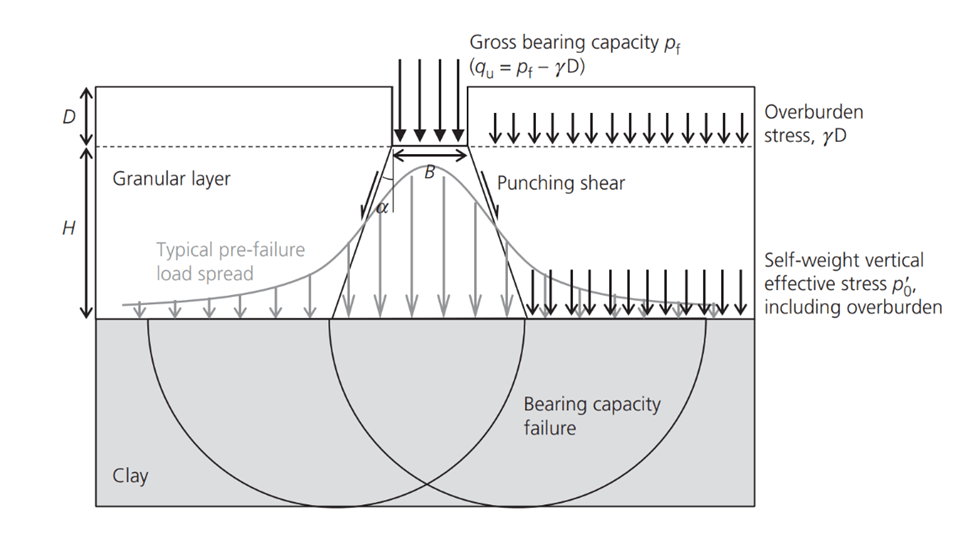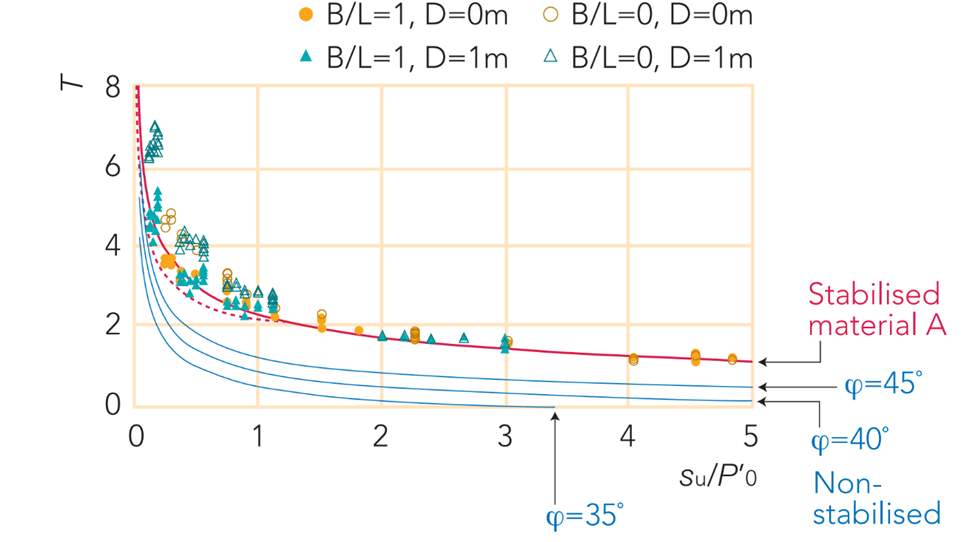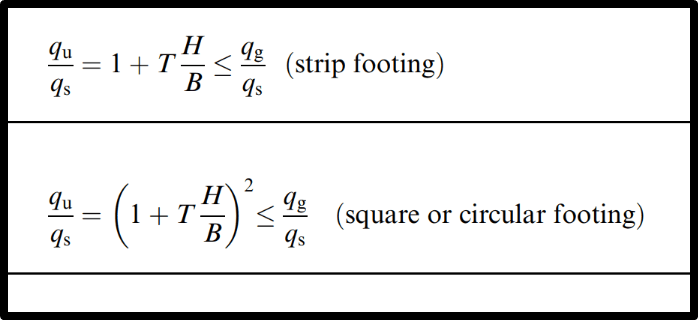T-Value method for piling mat design
Tensar’s design approach, the T-Value method, is based on the non-dimensional relationship between bearing capacity and the load transfer efficiency of a granular layer, expressed as a dimensionless T-value. This is dependent on the shear strengths of the granular layer and the subgrade beneath. T-value for a specific aggregate type (and geogrid type for stabilised aggregates), is derived from numerical analysis, parametric study, and physical testing.
The T-value method has been rigorously validated and published in peer reviewed papers.

Figure 4 Geometry of the problem (Lees 2020)
A piling mat comprises a granular layer over a weaker subgrade soil, in this case, clay (Figure 4). The design must determine the required thickness of the granular layer to satisfy each load case. BR470 defines two critical loading conditions that must be examined for the specific piling rig being considered.
The T-value for non-stabilised granular material can be calculated or obtained from a chart (Figure 5). The three blue lines are T-value curves for different friction angles. A single T-value curve for a specific geogrid stabilised granular material is also shown on the chart in red. Different stabilisation geogrids will have similar but different T-value curves. Tensar has developed T-value curves for a range of their geogrids in a variety of granular materials.

Figure 5 - T-Value variation with su undrained shear strength of clay, for non-stabilised granular layers (blue) and a stabilised layer with a specific geogrid (red). (Lees & Matthias 2019)
Having determined the T-value, the two simple equations below in Figure 6, enable calculation of bearing capacity ratio for a strip footing (B/L = 0) and a square footing (B/L = 1), where B is the footing width and B the length.
Piling rigs have a rectangular footing where B is the track width and L is the effective length of track applying pressure. The effective track length L and pressure distribution is defined for each load case.
The bearing capacity ratio for a rectangular footing is obtained by linear extrapolation between the strip footing (B/L = 0) and square footing (B/L=1).
The inequalities in the two equations in Figure 3 are needed to check for cases where critical shear failure occurs entirely within the granular layer.

Figure 5 - Bearing capacity equations for strip and square/circular footings, where T represents the load transfer efficiency of the granular layer, qs=surface bearing capacity of subgrade when H=0, qg = surface bearing capacity of granular layer when H=infinite. (Lees 2020)
Keen to learn more about applying this method to piling mat design? Take a look at our dedicated T-Value guide.









